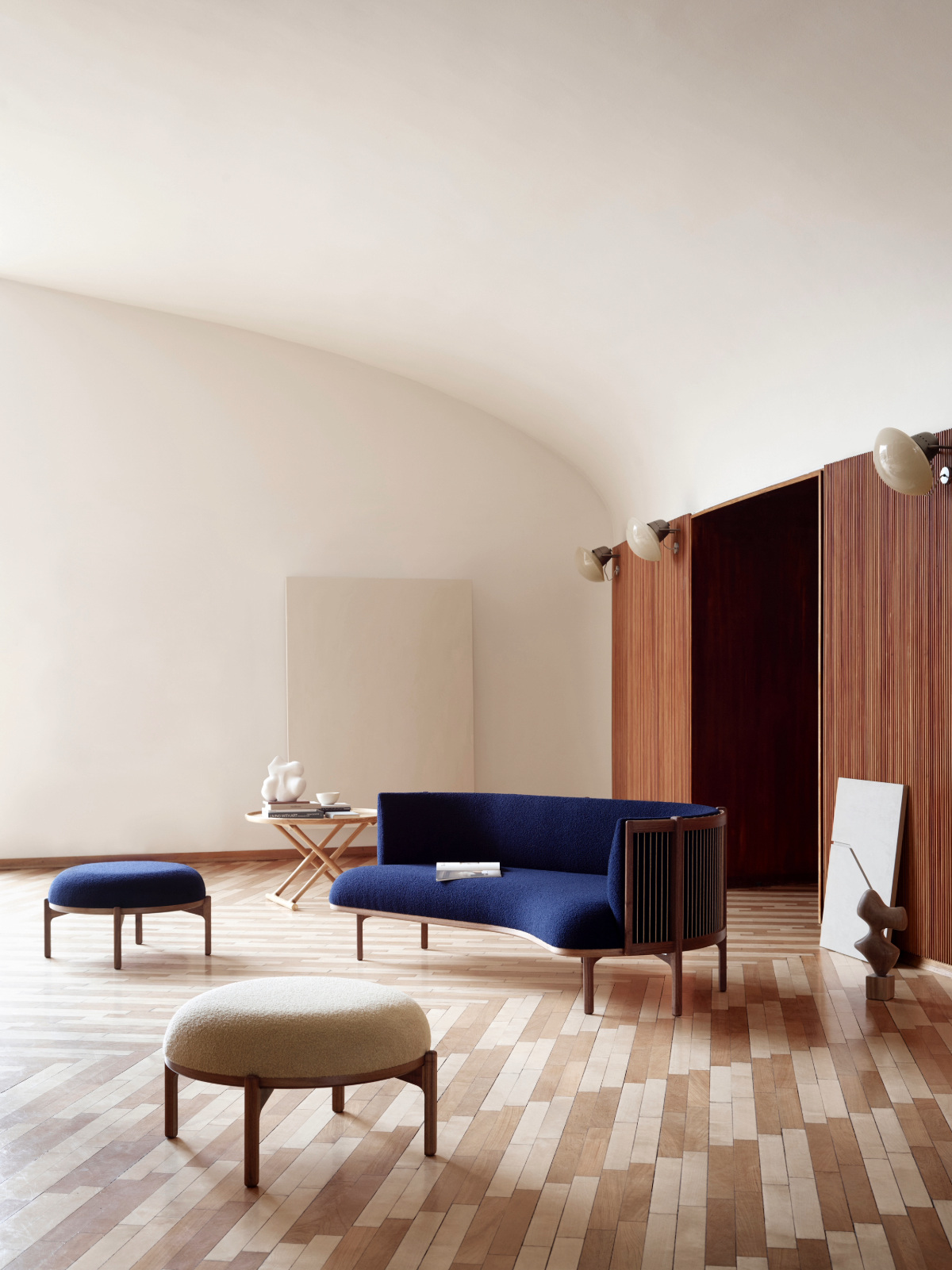
The first thing Rikke Frost does when designing a new piece is ask, “Why?” In a world she describes as “full of useless stuff,” Frost has to be convinced her work is deserving of a place. Since its inception in 2020, Frost and Carl Hansen & Søn's Sideways series has epitomized the seamless melding of form and function, drawing inspiration from the natural world and Danish design traditions. Now, the team is making room for a few new additions with the creation of a lounge chair and coffee table, in stores this October.
Frost describes the series as beginning with the circle—representing harmony, unity, and balance—executed in curved wood, upholstery, natural paper cord, and Italian marble. "She feels very strongly about her design work," says CEO Knud Erik Hansen, "and develops pieces which are grounded in uncompromising craftsmanship and a high degree of functionality, which are both central to everything we do at Carl Hansen & Son."
Ahead of the launch, Frost caught up with CULTURED to discuss the evolution of her collaboration, the Danish traditions that guide her work, and design's place in contemporary spaces.

CULTURED: Working with fellow Danes at Carl Hansen & Søn, how do local tastes and the country's history in design inform your collaboration?
Rikke Frost: The Danish tradition of working with wood and functionality is a big part of this collaboration. I base my work on three words: minimal, magical, and mindful. I reflect mindfully on human beings, our behavior, the use of materials, and the impact on the environment. I try to implement magical moments, tactile experiences, details, and functions that the end user can explore and reflect upon. I believe that in this collaboration with Carl Hansen & Søn, we have built on the Danish tradition, yet added a relevant touch to the design and concept.
CULTURED: How do you approach the selection of materials for your pieces, particularly when these are items that have to be as functional as they are elegant?
Frost: I look at the properties of materials and try to utilize them as best as possible in the design and function wanted. I work with the proportion and mix of materials, which I believe often makes a design elegant.
CULTURED: What would you say are the key tenets that you took away from your education in industrial design? Do these principles still factor into your work, or are some rules meant to be broken?
Frost: The idea for a new product has to be relevant and make sense. The focus on how to utilize materials in the best possible way is—in a world with focus on how we use our resources—still very much a key factor for me.
CULTURED: When it comes to the realm of furniture design, what shifts in the industry do you hope to see coming down the line?
Frost: I hope that we all make a bigger effort to design well thought through, long-lasting, and relevant designs. I believe we, as designers, have a responsibility to look for clever solutions and start the design process in the most sensible way.

CULTURED: When you start on a new piece, what is the first thing you do?
Frost: I ask a lot of why questions to make sure the new design can be justified to be put into a world full of useless stuff.
CULTURED: How do you envision these new pieces fitting into people's homes? Has anyone ever used one of your designs in a way that made you see it in a new light?
Frost: The concept for the Sideways series is to support the very important natural conversation between human beings, and therefore, I have envisioned the pieces in all kinds of settings—both in private homes and in public areas. So far, I have not been surprised by the way the series has been used, but I will very much look forward to following the use of the series in even more spaces.
CULTURED: What would you say is an element in each of your designs that identifiably marks it as something from your studio?
Frost: Looking at my work, I have realized that I work very much with circular lines. I think it is because I believe human beings are drawn to circular and rounded lines. They are inviting and create balance and harmony.
CULTURED: What do you see as the differences and points of similarity in the style and process of Carl Hansen & Søn and you?
Frost: At Carl Hansen & Søn, they have a DNA and a tradition for working mainly with wood, where I am more free and open to working with all kinds of materials. What we both cherish and care for are details and thought-through designs.










 in your life?
in your life?

